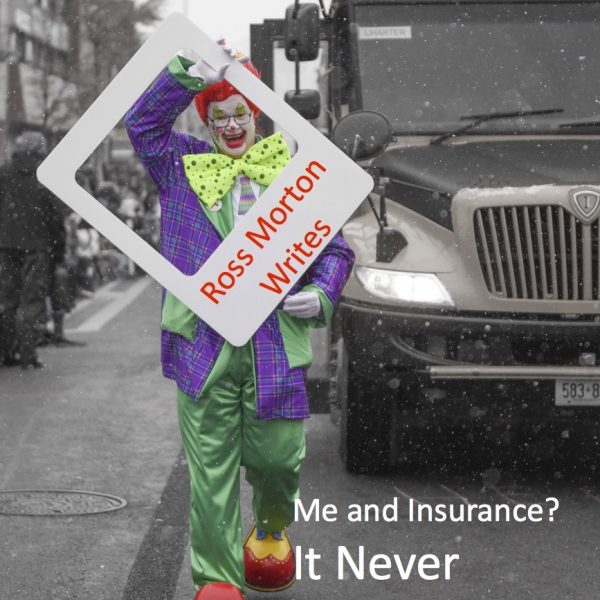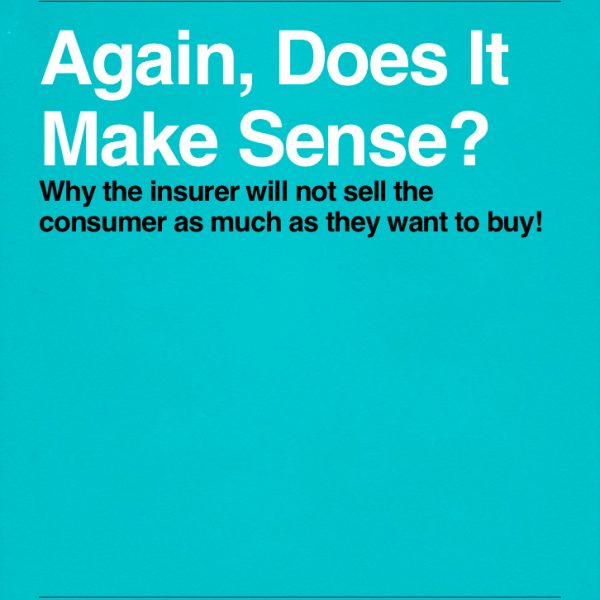Over the past many months I have spent a considerable amount of my valuable time with systems people. They look the same, except for the pens in their pockets and intense giddiness when hardware and software is mentioned. They, these gurus of tomorrow’s solutions at today’s bargain prices, do speak a different language from us farm boys from rural Ontario. Because of these glaring differences I was astounded to hear reference to “paving the cowpath” by non other than an individual from IBM who spoke with a Texas twang.
The cowpath was fundamentally the route that paper takes from the customer’s desk or kitchen table to the bowls of the large life insurance company. Yes there are bowels deep inside often supplanting the heart but that is another story. The reference was of course to the making the path smoother to travel as step one and perhaps straightening it as step two. Benefits include not stepping in some great fertilizer or trying to poop and scoop with a plastic bag.
Filling in application forms is an integral part of our business and without the abundance of forms of all shapes and sizes we would have less bureaucracy, fewer lawyers and less of an encumbrance at the front end of the life insurance business. Unfortunately the paper is around for a few more years and there is a great struggle to reduce the volume what looms on the horizon may not offer much of an alternative unless everyone pitches in to make the choices viable. The worst possible scenario is for paper to not be reduced but exaggerated to serve no concrete purpose. Using two words to spell cowpath goes against my humble origins.
In late 1994 a rather sharp, as in bright pink paper, piece of mail came to my attention thanks to someone who was in cardiac arrest after having himself received the article in question via the Queen’s postal system. It was not that he wanted moi to follow his heart’s reaction but rather hopefully and erroneously tell him it was a mirage. Behind the vibrant pink cover were six pages that represented the culmination of countless hours of work by industry professionals. There was also the covering note reflecting the praises of the industry “alert getter”. My review of the onerous material was the same as the provider of the sleepless night, “Who is going to use this form?”
Not to hurt anyone’s feelings but “The Uniform Paramedical Part II” designed by The Uniform Part II Development Committee was a shock to the system (human not computer). Six pages of square boxes for nurses or doctors to steadily and exactly within the squares write in all that ails our potential customers. I never learned who was to pay for the filling in of same nor the training on printing and brevity. December 1995 and I am still searching for a company that is using this new and evolutionary form.
The intention was fantastic and well directed at the gathering of information that would free our computer’s desire for encodeable data via optical readers or at least clever data entry clerks (is that still politically correct or is there a more apt description of an age old unction? The race was definitely on to either have all concerned with an application for life insurance enter data directly onto a computer or at least print like you did in grade three. Unfortunately but probably predictable the race became a three-legged race. One leg represented the standardization of all our forms. The second leg represented ANSI standards (a North American wide move to standardize our data by number and specific locations. Lastly we had the laptop race, which became closer to fiction than fact in 1995.
Today we have hard earned real cash being spent on all legs of the race and yet there appears to be little concerted effort to bring all the factions together to build a vehicle that encompasses all that is needed now and sets up the future. I will mention a few initiatives that are going on with a restraint on my usual unbridled critiques of things that go bump in the night or in this case the light of day in our insurance industry. My apologize to any of the hard working committee members that I offend through my candour but I am sure you or they (if they are not readers of MO) will take in stride and put me on another task force.
The ANSI standards group has been looked at from afar by yours truly with admiration for its unfailing enthusiasm for what is a boring and tedious project spread over hundreds of volunteers who see gain from the pain. Their task is to get all our forms and procedures reduced to simple numeric codes that will enable the rapid assimilation by machine of our data and our directions for that data. In the world of the future their diligent and extremely detailed work will pay for itself many times over. For right now, as I learned when working on an insurance industry system, the standards are often ahead of the need or not quite ready where needed. Fact and fiction are merging though so lets not give up. At last count the life application had 400 plus encodeable pieces of data. That of course is the biggest xzy%$#… of an application any one of us will ever see. Again I will be pleased to see the abridged version of only two hundred.
The laptop as means of collecting data be it the application or the medical data via doctor or nurse is on its way and is in real use in some organizations — usually those that have captive field forces and can bear the cost. If we had a world whereby every agent or broker could enter all that personal data of customers and have it feed the illustration systems and on to the application for insurance, paper would disappear and layers of data entry people would be redundant. I was recently told of one large US company that has 11 (lucky eleven) points where critical data like name, SIN, date of birth and address are entered! With electronic applications we can feed the life insurance company with “EDI” that turns the crank of underwriting and administration systems.
I am waiting for this day, which I predicted, would happen in 1990. Maybe 1998 is the transition year between paper as our medium and binary numbers (binary numbers were designed for simple folk) as our salvation.
The generic application is just like generic medicine — it’s not only good for what ails you but also it costs so little. The largest cost is in the ownership ritual people have for what is coveted in their own application both part I and part II. Twenty-five years ago I was trained on the existing generic (it was not called generic since I think the word generic was not invented yet) part II. Individualism was the rage and the uniform part II was devoured by numerous precocious lawyers, underwriting academics (I enjoyed that period) and verbose medical practitioners. Today we look back on valiant yet futile attempts to get a generic application and notice our sister/brother (Steve, which is politically correct) industry in the automobile insurance environment using a simple, cheap and thin generic application.
Most recently a new beginning is sought for a generic application because agent, broker, underwriter, administrator, etc. wants to reduce costs, increase simplicity, carry less paper and move us to an eventual smooth transition to electronic data flow. A small group of forward thinking entrepreneurs unfettered by the past and encouraged by their employers want to have a generic application on the street by the end of the first quarter of 1996. It can be done and it would be a tribute to today’s life industry if we could drop the comical rivalry in building pretty to view but cumbersome to use applications. For the group I sampled a dozen brokers and two career agents (closet brokers who’s secret will follow me to my book) and six underwriters (had to have less than the producers for fear of reprisals). Unanimous in desire to have a generic application. Not quite so one-sided in support. One of the latter said it could not be done and is a waste of effort. The gauntlet is on the turf and I sincerely hope the whole spectrum of industry movers and shakers step up to retrieve it and bring about a miracle.
ANSI, laptops and generics (not to be mistaken with geriatrics) are here and evolving. There are no shortcuts to retooling our industry but a network that binds us all at the most cost effective unit cost an bring about all of the above as it forms a catalyst for evolution. Imaging paper and gradually increasing the EDI segment as it evolves and brokers learn to type faster than me is one way of getting the paper collected in front of the nose of the underwriter immediately. This will give immediate results to the broker while setting up the electronic infrastructure to handle more and more of those elusive binary numbers. The latter being a home run for the head office staff.
Telemarketing is a proven phenomenon that has been used to sell everything from chimney cleaning to insurance. Success varies by product but it generally has a large following of believers who hope it grows in life insurance. The latest upstart of similar genetic structure is the teleunderwriter. The agent does his or her think in finding the customer, assessing the need and closing the sale. The basic data about the human being are given to the teleunderwriting team who has an underwriter call the customer at a predetermined time. The success of the underwriter customer interaction has been very high. Less attending physician statements is a real big plus as they account for the single largest reason for delays in underwriting (although lost files really ran a close second right up at the echelon of significant issues).
Brokers sell. Underwriters underwrite. Medical evidence providers provide data. Laboratories get the spit, peepee (another one of those descriptive words that only a mother could invent) and blood. Administrators administrate. Network managers manage it all. What a great world we are heading into as an industry. Now if we could only get all brokers to be data entry persons!

